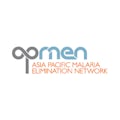Asia Pacific Remains Vigilant Against Malaria While Increasing Elimination Efforts to Address Gaps in High-Burden Countries
by APLMA & APMEN •

Bed nets for workers in Cambodia. Credit: Global Fund
- Asia Pacific(1) has achieved excellent progress in reducing the malaria burden over the past 20 years
- The South-East Asia region reported an 8% increase in malaria cases
- Western Pacific region reversed upward trend seen in 2020
Singapore, 8 December 2022 – The World Health Organization’s (WHO) annual World Malaria Report(2) 2022, published today, shows countries held the line against malaria, avoiding the worst-case scenario although still seeing a modest increase in cases in 2021 across the globe and within the Asia Pacific region. The Asia Pacific Leaders Malaria Alliance (APLMA) and Asia Pacific Malaria Elimination Network (APMEN) recognise the remarkable elimination efforts made by countries despite devastating global disruptions, while warning against complacency to ensure the region stays on course to achieve malaria elimination by 2030.
According to the latest estimates, although worldwide malaria cases increased marginally and at a slower rate compared to 2020, 185 million cases and 997,000 deaths were averted in 2021. Globally, High Burden to High Impact(3) countries had fewer cases than expected during the pandemic while over 60% of the WHO’s E-2025(4) initiative countries -- including Malaysia, Bhutan, Nepal, the Republic of Korea, Thailand, Timor-Leste, and Vanuatu -- maintained progress.
The WHO’s South-East Asia region reported an 8% increase in malaria cases due to a wide variety of challenges and threats, including emerging species of malaria, humanitarian conflict, and the ongoing pandemic, all of which have had an impact on progress against malaria. The WHO’s Western Pacific region reversed their upward trend from 2020, seeing a 14% drop in malaria cases down to near 2019 levels. Papua New Guinea, however, still carried the largest burden in the Western Pacific region with 87% of cases, followed by the Solomon Islands (11%). Investments in the Greater Mekong Subregion(5) (GMS) have continued to pay dividends as the subregion sustains progress. Myanmar however, accounted for most malaria cases in the subregion due to disruptions in malaria response caused by political instability in 2021.
Dr Sarthak Das, Chief Executive Officer, APLMA said:
“This year’s report shows the resilience and resolve of countries in Asia Pacific to end malaria, despite unprecedented global health challenges, but it also reminds us that relentless effort is needed to prevent resurgence and reach the last mile. With an estimated 7,507,965 malaria cases as well as 12,309 deaths from malaria reported in Asia Pacific, we continue to see malaria affecting the most vulnerable countries - this is unacceptable for a preventable and treatable disease.
We need to persist in protecting the gains Asia Pacific has made over the last two decades by increasing awareness at all levels of leadership and supporting well-resourced programmatic efforts. Countries in the region must also continue embracing a whole-of-government approach while optimising tailored approaches for sub-National Districts, States and Provinces, to reach our vision for a malaria-free future.”
The commitments, investments and actions partners and countries make today and over the next few years will be crucial for addressing the inequitable malaria burden across Asia Pacific and the challenges that parts of the region and countries continue to face. In malaria-endemic countries like Indonesia, the malaria burden is still unequal. For example, Papua - a remote province - accounts for the majority of the nation’s malaria cases. Yet country-wide, out of 514 districts, 347 were declared malaria-free in 2021(6), protecting 85% of the population from the disease.
Dr Maxi Rein Rondonuwu, DHSM, MARS Director General of Communicable Disease Prevention & Control, Indonesia commented:
"While the report highlights estimated malaria cases in Indonesia increased slightly in 2021, in the same year Indonesia declared 29 new malaria-free districts. Malaria is now more focused and localised especially in Eastern Indonesia. We will accelerate the burden reduction of malaria in high-burden districts, such as Papua and Nusa Tenggara Temur through innovative and tailored solutions to further enhance surveillance, case management and prevention through community-based and public-private partnerships in remote and hard-to-reach areas.
At the national level, Indonesia is also working towards improving access to universal health coverage, through our health transformation agenda to address the continued burden reduction and impact to malaria elimination in Indonesia.”
For years, countries in the Asia Pacific region have prioritised elimination and made significant progress in the fight against malaria using a variety of tools and strategies: from collaborating with neighbouring countries and stepping up malaria surveillance, to playing a critical role in resolving supply chain disruptions of life-saving malaria interventions, to ensuring malaria services continued even during the height of the pandemic. Still, our work to reach the end game is far from over.
Dr Karma Lhazeen, Chair of the Asia Pacific Malaria Elimination Network (APMEN) Vivax Working Group, said:
“Many countries in the Asia Pacific are on the cusp of history - malaria elimination is within reach for the first time ever. However, although we have turned a corner with antimalarial drug resistance and significantly driven down P. falciparum cases in the Greater Mekong Subregion, we cannot be complacent. Elimination in the Asia Pacific is not possible if we do not address P. vivax.
More than half of all global vivax infections are in the Asia Pacific region, and as the report indicates, it has now emerged as the dominant species in the GMS and is on the rise in other parts of the region. Next generation malaria control tools, such as single dose or shorter treatments for vivax radical cure and G6PD diagnostics show promise and are becoming available for implementation. Investment for the deployment of these newly available treatment and diagnostic tools is required to finish the job and end malaria in our region.”
The last two decades have been pivotal to the Asia Pacific region, thanks to strong political leadership, national malaria programs, global partnerships, and investments to date. Now is not the time to risk the region's hard earned gains. With continued vigilance and resilience, commitment, and collaboration, we can and must stay the course to end this deadly disease for generations to come.
Notes to editors
(1) APLMA unites 22 governments in Asia Pacific -- across WHO regions Eastern Mediterranean Region (EMR), South-East Asia Region (SEAR), and Western Pacific Region (WPR) -- who have committed to eliminating malaria in the region by 2030. APLMA defines Asia Pacific as: Afghanistan, Bangladesh, Bhutan, Cambodia, China, Democratic People's Republic of Korea, India, Indonesia, Lao PDR, Malaysia, Myanmar, Nepal, Pakistan, Papua New Guinea, Philippines, Republic of Korea, Solomon Islands, Sri Lanka, Thailand, Timor-Leste, Vanuatu, Viet Nam.
(2) All data and estimated cited are from the World Malaria Report 2022 unless otherwise noted. More information is available at: World Malaria Report 2022.
(3) “High Burden to High Impact” is a country-led response catalysed by WHO and the RBM Partnership as a mechanism to support the 11 highest burden countries to get back on track to achieve the Global technical strategy for malaria (GTS) 2025 milestones For more information, visit: http://apps.who.int/iris/handle/10665/275868
(4) E-2025 is a WHO initiative of 26 countries and territories identified as having the capacity to eliminate malaria by 2025. For more information, visit: https://www.who.int/news/item/21-04-2021-world-malaria-day-who-launches-effort-to-stamp-out-malaria-in-25-more-countries-by-2025
(5) Greater Mekong Subregion (GMS) defined as: Cambodia, China (Yunnan Province), the Lao People’s Democratic Republic, Myanmar, Thailand and Viet Nam.
(6) As reported by the Indonesia Ministry of Health, Communicable Disease Prevention & Control, Midterm Review Malaria Programme 2022.
About APLMA and APMEN
APLMA is an affiliation of Asia and Pacific heads of government, formed to accelerate progress against malaria and to eliminate it in the region by 2030. APLMA was created by the East Asian Summit (EAS) leaders in 2013 to further strengthen anti-malaria efforts, both to help protect hard-won national gains and, ultimately, to defeat malaria in the region altogether. To guide this work, the Asia Pacific Leaders’ Elimination Roadmap sets out the strategic priorities for achieving the 2030 goal. aplma.org
The Asia Pacific Malaria Elimination Network (APMEN) is a network of countries and stakeholders, committed to eliminating malaria in Asia Pacific by 2030. apmen.org
For further information and media enquiries:
- Dimple Natali – APLMA; E: [email protected]
- Helen Lee – GCI Health; E: [email protected]






